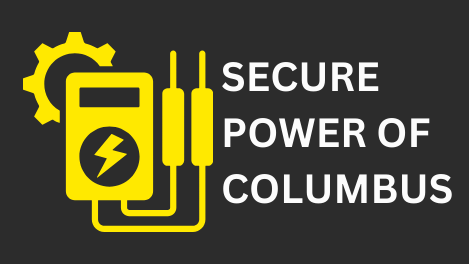
Whole House Generator in San Margherita OH
A whole house generator is an essential device designed to provide backup power to your entire home during outages. This type of generator ensures that you and your family are not left in the dark when the electricity goes out. The demand for reliable power solutions is high, making whole house generators a popular choice for many homeowners.
A whole house generator is a stationary unit that powers your entire home when the main power source fails. Unlike portable generators, which only supply power to a few essential appliances, whole house generators are capable of powering all the systems and appliances in your home simultaneously. There are several types of whole house generators:
- Standby Generators: These are permanently installed outside your home and are connected directly to your electrical system. They automatically turn on when a power outage is detected.
- Automatic Generators: Similar to standby generators, these units start up automatically during a power outage without any manual intervention.
- Dual-Fuel Generators: These versatile generators can run on either gasoline or propane, offering flexibility depending on fuel availability.
- Natural Gas Generators: Fueled by natural gas, these generators are connected to your home’s gas supply and are a reliable option for long-term use.
How It Works
Whole house generators are equipped with an automatic transfer switch (ATS) that detects when there is a power outage. When the ATS senses a disruption, it automatically starts the generator and switches your home’s power source from the grid to the generator. This seamless transition ensures that your home remains powered without any interruption. Once the power is restored, the ATS switches back to the grid and shuts down the generator.
How It Differs from Portable Generators
The main difference between whole house generators and portable generators lies in their capacity and convenience. Whole house generators are designed to handle the power needs of an entire home, whereas portable generators are typically used to power only a few appliances or devices at a time. Portable generators require manual setup and connection, while whole house generators start automatically and are permanently installed outside your home.

We will get back to you as soon as possible.
Please try again later.
Additionally, whole house generators are more reliable for extended power outages, as they have a larger fuel capacity and can run continuously until the power is restored. Portable generators, on the other hand, often need frequent refueling and can be less dependable during long outages.
Professional Installation Process
Installing a whole house generator involves several critical steps that must be handled by a professional. The process begins with a thorough assessment of your home’s power needs and electrical system. A qualified technician will then determine the appropriate size and type of generator for your home. The installation process includes:
- Site Preparation: The installation team will prepare the site where the generator will be placed, ensuring it is level and meets local codes.
- Generator Placement: The generator is positioned in the designated area, typically on a concrete pad or a specialized mounting system.
- Electrical Connections: The generator is connected to your home’s electrical system through a transfer switch. This ensures a smooth transition between the grid power and generator power.
- Testing: After installation, the system is thoroughly tested to ensure it operates correctly and meets safety standards.
Maintenance and Care
Regular maintenance is crucial to ensure the reliable operation of your whole house generator. Routine tasks include:
- Checking the Oil: Regularly check and change the oil to keep the engine running smoothly.
- Inspecting the Air Filter: Replace or clean the air filter as needed to ensure proper air flow.
- Testing the System: Run the generator periodically to ensure it starts up and functions correctly.
- Inspecting the Battery: Check the battery for charge and signs of wear.
Scheduling professional maintenance at least once a year can help identify and address any potential issues before they become major problems.
Costs and Financing
The cost of a whole house generator varies based on several factors, including the size of the generator, the complexity of the installation, and any additional features. On average, whole house generators can range from a few thousand to several thousand dollars. Installation costs also need to be factored in. Many financing options are available to help manage the expense, including:
- Payment Plans: Some companies offer payment plans to spread the cost over time.
- Home Improvement Loans: These loans can be used to cover the cost of purchasing and installing a generator.
- Manufacturer Rebates: Occasionally, manufacturers offer rebates or discounts on their products.
What Are the Benefits
Investing in a whole house generator offers numerous benefits:
- Continuous Power: Keep your home powered during outages, ensuring that essential systems like heating, cooling, and refrigeration remain operational.
- Increased Property Value: A whole house generator can increase the resale value of your home.
- Convenience: Enjoy peace of mind knowing that your home will have power without the need for manual setup or refueling.
- Safety: Avoid the risks associated with power outages, such as spoiled food or loss of heating during cold weather.
What We Offer
At our company, we specialize in providing top-quality
whole house generator installation in San Margherita, OH. Our experienced technicians ensure that every installation meets the highest standards of safety and performance. We offer a range of generator options to suit different needs and budgets, and we provide ongoing support and maintenance to keep your system in top condition.
- Residential Generators
- Commercial Generators
- Portable Generators
- Electric Generators
- Propane Generators
- Solar Generators
- Generator Repairs
- Generator Maintenance
- Generator Parts
Common Misconceptions
Several misconceptions exist about whole house generators:
- High Cost: While the initial investment can be significant, the long-term benefits and reliability often outweigh the cost.
- Noise: Modern generators are designed to operate quietly and are equipped with noise-reducing features.
- Complexity: Whole house generators are user-friendly and designed for seamless operation with minimal maintenance.
Troubleshooting Common Issues
Common issues with whole house generators include:
- Failure to Start: This could be due to a dead battery, low fuel levels, or a faulty starter. Regular maintenance can help prevent these problems.
- Power Output Problems: If the generator is not providing sufficient power, check the load capacity and ensure it is not overloaded.
- Strange Noises: Unusual noises may indicate mechanical issues or a need for servicing.
If you experience any of these issues, consult with a professional technician to diagnose and resolve the problem.
Frequently Asked Questions (FAQs)
- How often should I have my generator serviced? It’s recommended to have your generator serviced at least once a year to ensure it operates reliably.
- Can a whole house generator run on propane? Yes, many whole house generators are compatible with propane as a fuel source.
- What size generator do I need for my home? The size of the generator you need depends on your home’s power requirements. A professional assessment can help determine the appropriate size.
- Are whole house generators noisy? Modern generators are designed to operate quietly, but noise levels can vary. Check the specifications for noise ratings.
- Can I install a generator myself? For safety and code compliance, it is best to have a professional install your generator.
If you’re considering a whole house generator in San Margherita, OH, contact us today. Our team of experts is here to help you choose the right generator and ensure a seamless installation. Don’t wait until the next power outage—secure your home’s power supply with a reliable whole house generator. Reach out to us for more information and to schedule a consultation.
Let's Connect!
We offer top-notch whole house generator solutions. Our team is dedicated to ensuring your home stays powered during outages. Learn about How Whole House Generators Work in our Buyer's Guide. Don't let unexpected power outages disrupt your life. Contact us today for reliable backup power solutions and embrace a worry-free lifestyle.